COLUMNS
LEVELLING
A few days ago, I had a surprise in Athens metro: I was in a car flooded with poetry! Instead of the usual ads like "buy this", "enjoy that," and "acquire the other", the advertising boards had verses by my favorite Odysseus Elytis [the 1979 Nobel laureate on literature]! My eyes were jumping from one poster to another: "Fundamental blue me what you spend to not see you," If one supports your foot out of the Earth'll never be able to stand on it, "Make a jump faster than decay". For a moment, I thought I was just dreaming.
I swiftly rejected the possibility of a dream, and I thought it was rather an odd joke or a movie scene. Then in a corner I read the secret: the occasion of this magnificent gesture was ‘The Poetry Day', a few weeks back. Later I learned that it was "an initiative by the National Book Centre marking the 100 years since the birth of Elytis, in order to get the poetry in everyday life for everybody." Thanks to the campaign, verses by the ‘sunny' poet decorated the public transport in Athens, Thessaloniki, Mytilene, Rhodes and Zakynthos for a month.
That metro ride was remarkable, not only because poetry had replaced the traditional consumption preaching, but also for another unusual reason: the displayed lyrics triggered a little chat between some passengers. It was not something inspiring, yet it broke the usual isolation of passengers among strangers. It was one more sign that art can awaken to anyone something different than, say, consumption.
Leaving the 'poetry' car behind, several thoughts were whirling in my mind. About how few people read a book in the metro. About the consumerist indoctrination that has become an integral part of our everyday environment. About how nice it would be if there were mandatory verses on each advertisement, just like the mandatory threats and curses on cigarettes. Above all, I was wondering this: Is there any 'poetry' in the public spaces of contemporary Athens? In other words, are there any deliberate stimuli that strike an emotional chord with the bystander as literature does with the reader? I began to recall parts of the city with that particular bliss caused by the ‘artistic space'. Places where the words 'space' and 'art' combine to mean something other than a gallery.
At first, I thought of those metro stations where posters are under control and artwork decorates the walls, enhanced by quality music. Certainly they are not artistic spaces as several stations in Stockholm, just local insertion of works. But the result is excellent compared to other relevant sites such as the intercity bus station in Kifissos, or even Athens airport.
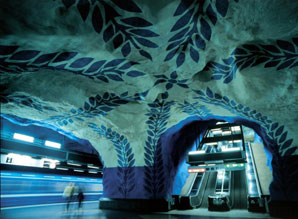
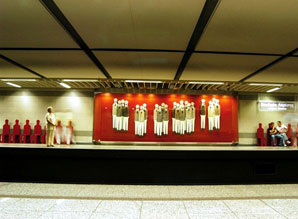
T-Centralen Station, Stockholm - Larissa Station, Athens,
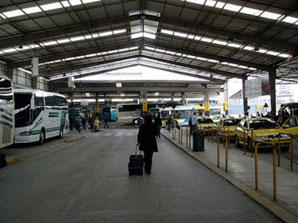
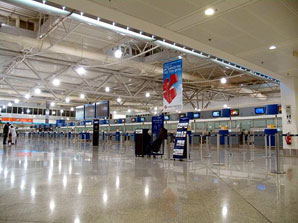
Athens Intercity Bus Station, Athens International Airport
As I was coming from Syntagma Square, I thought how unpleasant the most central square of the country is, in spite of the large sums that have been spent for its 'reconstruction' over the last 10-15 years. The dull fountain in the middle seems to epitomize the aesthetic environment of most Athenians. The conventional greenery around is not sufficient to provide something better than coolth and to offset the lack of creative imagination in the whole layout.
One kilometre down the road is a site that attracts me a lot, Monastiraki with its renovated square. The city scale is different there, with different ambience. It has no greenery at all, but it has interesting architectural features. The dotted curves of the colourful pavement, the elaborate mechanical vents, the underground water of Eridanos River, offer attractive stimuli, emanating something more interesting than the boring Syntagma Square. Two nearby but dissimilar examples of public space design, with contrasting end results.
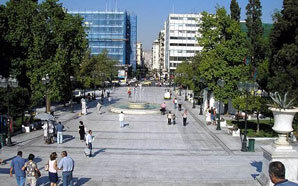
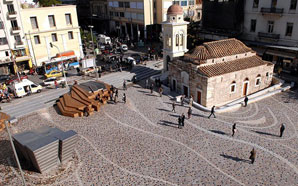
Syntagma Square, Monastiraki
If we draw a parallel between architecture and literature, then Athens has plenty of pointless fairy tales, flabby essays, awkward narratives, clumsy translations. Exciting fiction or smart novels are few, and poetry is a treasure hard to find. Nevertheless, it is not only buildings and open spaces that have an impact on the urban landscape; it is also human communication. The urban iconography is dominated by adverts of every kind and size, continuously reminding the primary duty of the good consumer. They are often complemented by torn political posters and ragged banners that wave like the corpses of Spartacus comrades in the Appian Way. Uncontrollable graffiti rarely offer the city something more than pigeon droppings do. The city resembles a crumpled general-interest magazine filled with full-page ads.
So that was the kind of thoughts I had in the ‘poetry train'. Coming out of the metro station under the influence of Elytis verses, a poster at the bus stop brought me back to the reality we actually live in. It was a fashion advertisement, broadcasting its message with a dynamic picture of destruction and a slogan at the bottom: "WE ARE ANIMALS".
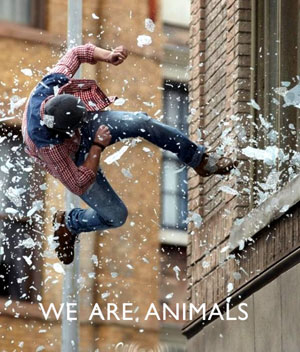
Thanos N. Stasinopoulos
Dr. Architect Eng. NTUA, AAGradDipl.
Related articles:
- Pills or diet? ( 31 August, 2011 )
- The fever of the naked emperor ( 15 November, 2010 )
- After the bubble gums ( 12 September, 2010 )
- Thanos Stasinopoulos .PIRAEUS TOWER 2010 ( 08 October, 2010 )
- Barriers, barriers everywhere ( 14 December, 2010 )
- Scenarios for the future ( 10 January, 2011 )
- Parks and submarines ( 21 February, 2011 )
- The oil barrel project ( 28 April, 2011 )
- On Winds and Waters ( 11 July, 2011 )
- The Titanic ( 07 October, 2012 )










